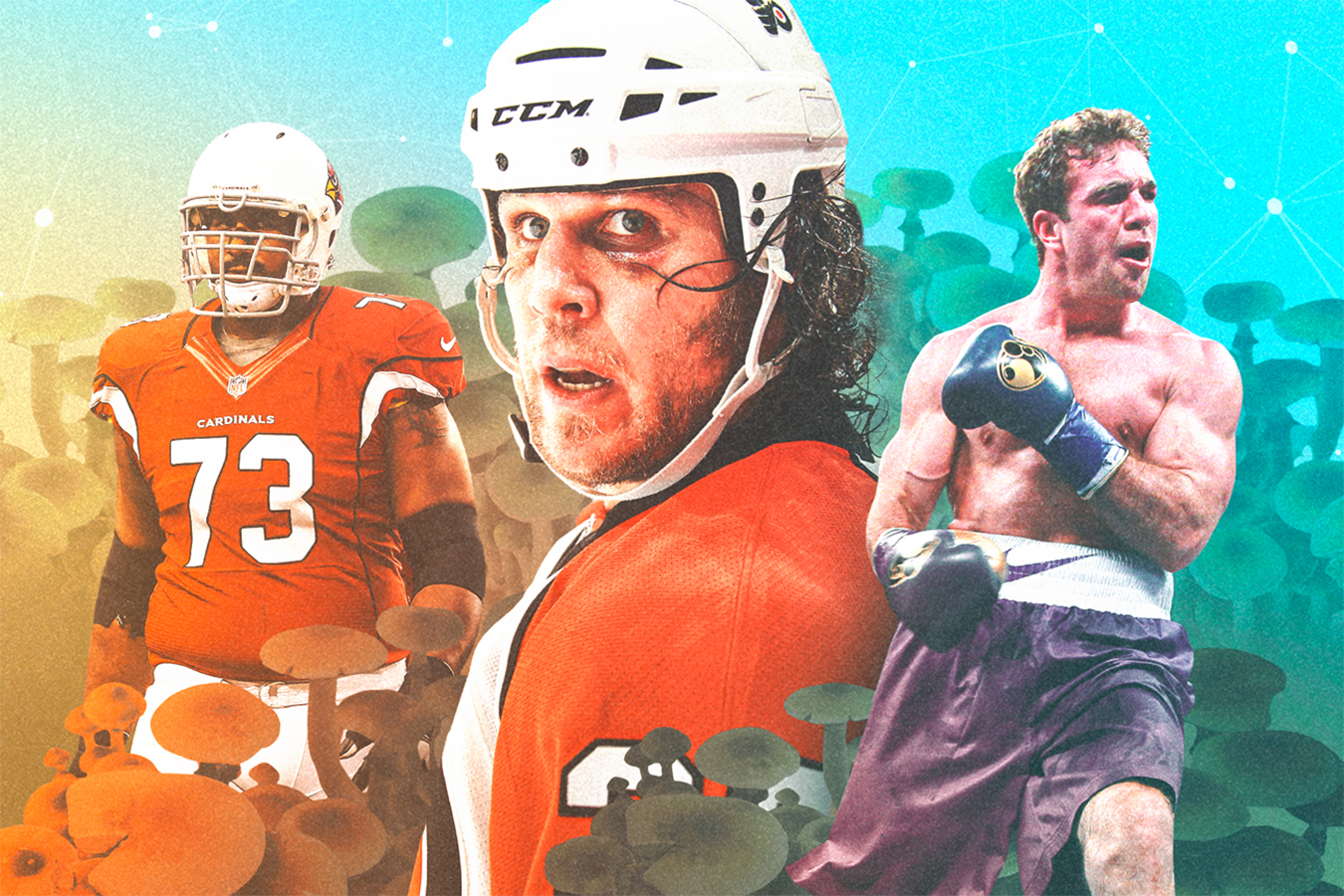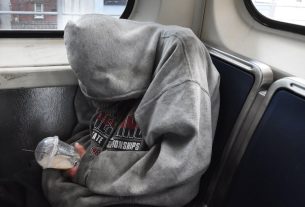If you or someone you know may be experiencing a mental health crisis, call or text the 988 Suicide & Crisis Lifeline at 988 or the Crisis Text Line by texting “HOME” to 741741. In Canada, call Talk Suicide Canada at 1-833-456-4566 or text 45645 from 4 p.m.-midnight ET.
WAKEFIELD, Jamaica — The boxer felt broken. Every day, he was waking up in pain. Some days, it was debilitating headaches. Other times, it was his back. Or his fists. His ribs. His nose. On top of that, he had mood swings. Depression. Anxiety.
Mike Lee didn’t regret his career. He had been one of the best professional fighters in the world in his weight class. He’d gone 21-1 professionally and fought in Madison Square Garden and in front of millions on TV.
But it had been more than two years since he’d been inside a ring, and every day was a reminder of the cost. At one point, Lee was taking eight prescription medications, all of them trying to help him cope. In his lowest moment, on a night when he was in the depths of an addiction to painkillers, he said, he contemplated driving his car into the median of a Chicago freeway at 140 mph. He was willing to do anything to escape the hell he felt trapped in.
The impulse faded, but the pain remained.
He was lost.
“When you’re in pain and you’re stuck in a corner, you’ll do anything to get out of it,” Lee said.
Now, he had come to a verdant jungle at the end of a dirt road halfway up a mountain.
Psychedelic mushrooms, he hoped, could change his life.
Lee was part of a small group — many of them retired athletes — who’d traveled to Jamaica in March 2022 for a retreat costing as much as $5,500. They each had come to the Good Hope Estate, a sugar plantation turned exclusive resort, hoping to rid themselves of depression, anxiety, and chronic pain they had experienced for years.
Two psychedelic mushroom ceremonies and two therapy sessions awaited them at the retreat run by a Canadian company called Wake Network. The participants were nervous, but also hopeful.
Along with Lee, there was a professional football player considering retirement and a former hockey star who had multiple concussions. They’d come from all over North America, from different backgrounds and different sports, but they had a few things in common: They were vulnerable, and they felt that prescription medications had failed them. They didn’t know what to expect, whether the treatment would work, whether they’d return home with a solution or just more disappointment.
Lee had learned about the retreat from a childhood friend who works as a doctor for Wake. Others had been recruited by Riley Cote, a former enforcer with the Philadelphia Flyers and now a psychedelics evangelist who is an adviser to Wake with an equity stake.
Cote was once just like Lee. He used to love punching people in the face. He loved the way his hand landed with a thud when his knuckles connected with flesh and bone at a violent speed. Snapping someone’s head back made Cote feel alive.
“I fought everyone and their brother in my career,” Cote said. “I would pick out the biggest guy I could find and challenge him. It was how I survived, how I made a name for myself. I was inflicting all this pain and inflammation on myself, always getting punched in the face, and I had to keep up with this macho type of personality, like, ‘Oh, you can’t hurt me. You can’t hurt me.’”
He was no longer that person. It made him cringe to think about the man he once was, someone who drank excessively and used painkillers to numb his brain. There was a time when he, like Lee, was in a dark place, but over the course of several years, psychedelic mushrooms, Cote believes, helped bring him back into the light.
“The world is in a crisis, a mental health crisis, a spiritual crisis,” Cote said. “And I think these are spiritual medicines, and I just feel like it’s the right path for me. I don’t think of it as anything more than my duty, my purpose on this planet is to be sharing the truth around natural medicine.”
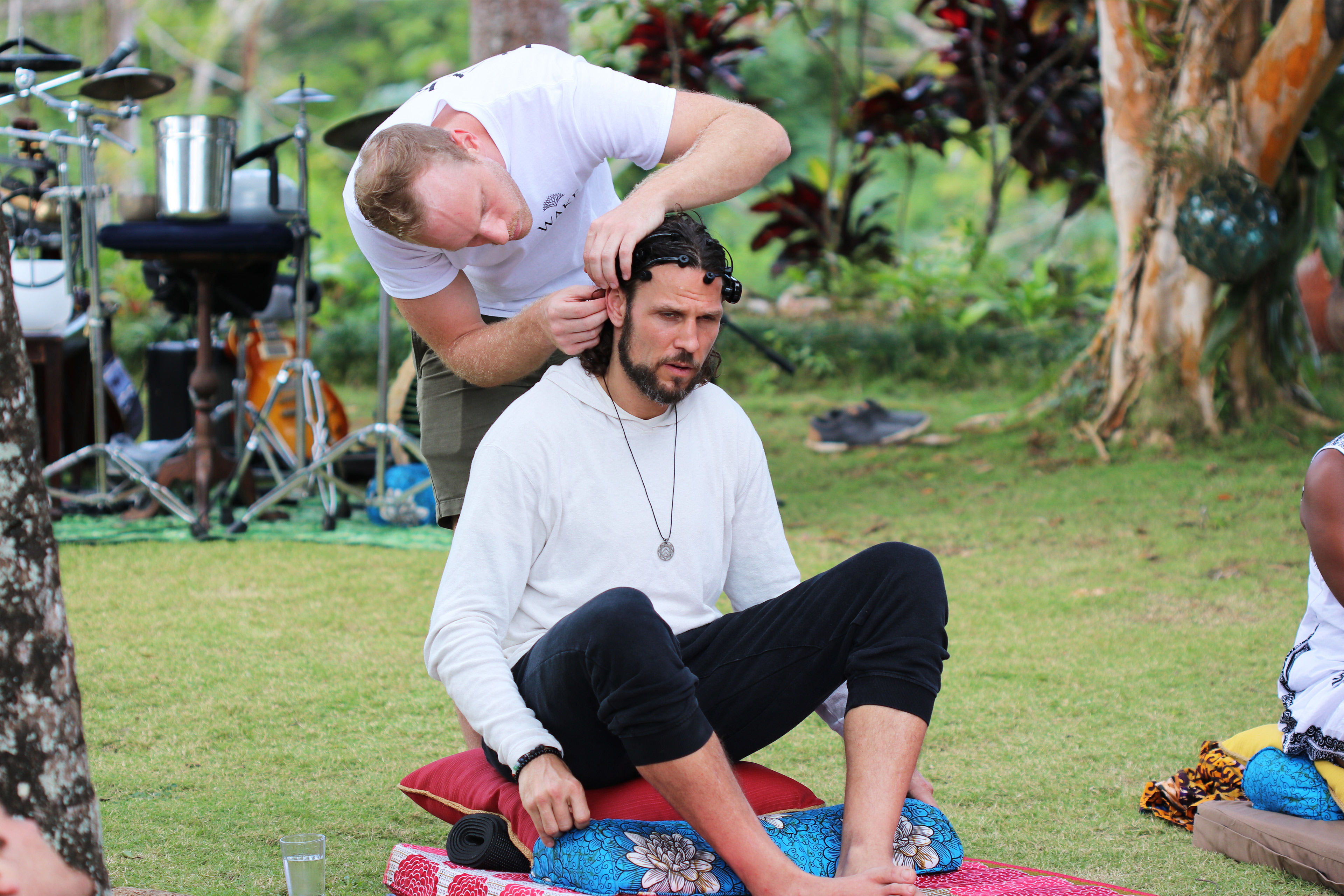
For years, whispers have circulated about an underground network of athletes — primarily ex-athletes — using psilocybin, the compound in magic mushrooms, to treat traumatic brain injuries, anxiety, and depression. Many of them, like Cote, view psychedelics as a miracle cure, the one thing they’d been able to find that could help break a cycle of pharmaceutical painkillers and substance abuse. They gathered in small groups to ingest mushrooms in private or traveled to countries such as Jamaica where psychedelic mushrooms aren’t prohibited.
Now the use of psychedelic mushrooms is gaining traction in the United States. A number of cities have decriminalized possession of psilocybin, and Oregon and Colorado voters passed ballot measures to legalize magic mushrooms under supervised use. Many researchers predict FDA approval of a psychedelic treatment will come within the next five years.
But many of those same researchers warn the hype over psychedelics is outpacing the science — and that the treatment comes with significant risks for some patients. They fear that, unless research is conducted methodically and ethically, widespread use of psilocybin could result in a public backlash, as it did in the 1960s, relegating a promising treatment to the dustheap of banned substances.
They are urging corporate entities like Wake, which are already positioning themselves to take advantage of the potential legalization of psychedelics, to go slowly, ensure the research is done the right way, and allow the science to catch up.
“If you don’t do this safely, people are going to get hurt,” said Matthew Johnson, a psychiatry professor and psychedelics researcher at Johns Hopkins University.
But many — including former pro athletes with battered bodies and brains — don’t want to wait for the slow grind of clinical research. They need help now. The painkillers, the antidepressants, the countless different pills they were prescribed over the years haven’t helped. In their minds, the stories told by fellow athletes who say they have benefited from psychedelics outweigh any scientific uncertainty.
“When you think of magic mushrooms, you think of hippies at Woodstock dancing around to music,” Lee said. “To think about you’ve got some of the best athletes in the world here that are dealing with some stuff and they’re taking it, it makes you feel more comfortable. It makes me feel like, ‘OK, maybe I’m doing the right thing.’ It’s a healing medicine; it’s not just a party drug.”
***
Cote, now 41, was a decent hockey skater growing up in Winnipeg, Manitoba, tenacious as hell from end to end and a tireless worker, but fairly average at handling the puck. He didn’t score enough goals to rise through junior hockey the way some prospects did. Yet as he got older, coaches didn’t mind as much. He had broad shoulders and a long reach. In an era of hockey where violence was still currency, he had found his golden ticket to the NHL: Cote would beat on people and get beat on in return. As a member of the Flyers, he saw it as his duty to uphold the traditions of the Broad Street Bullies, a group of players from the 1970s who were celebrated by the press for playing — and partying — hard.
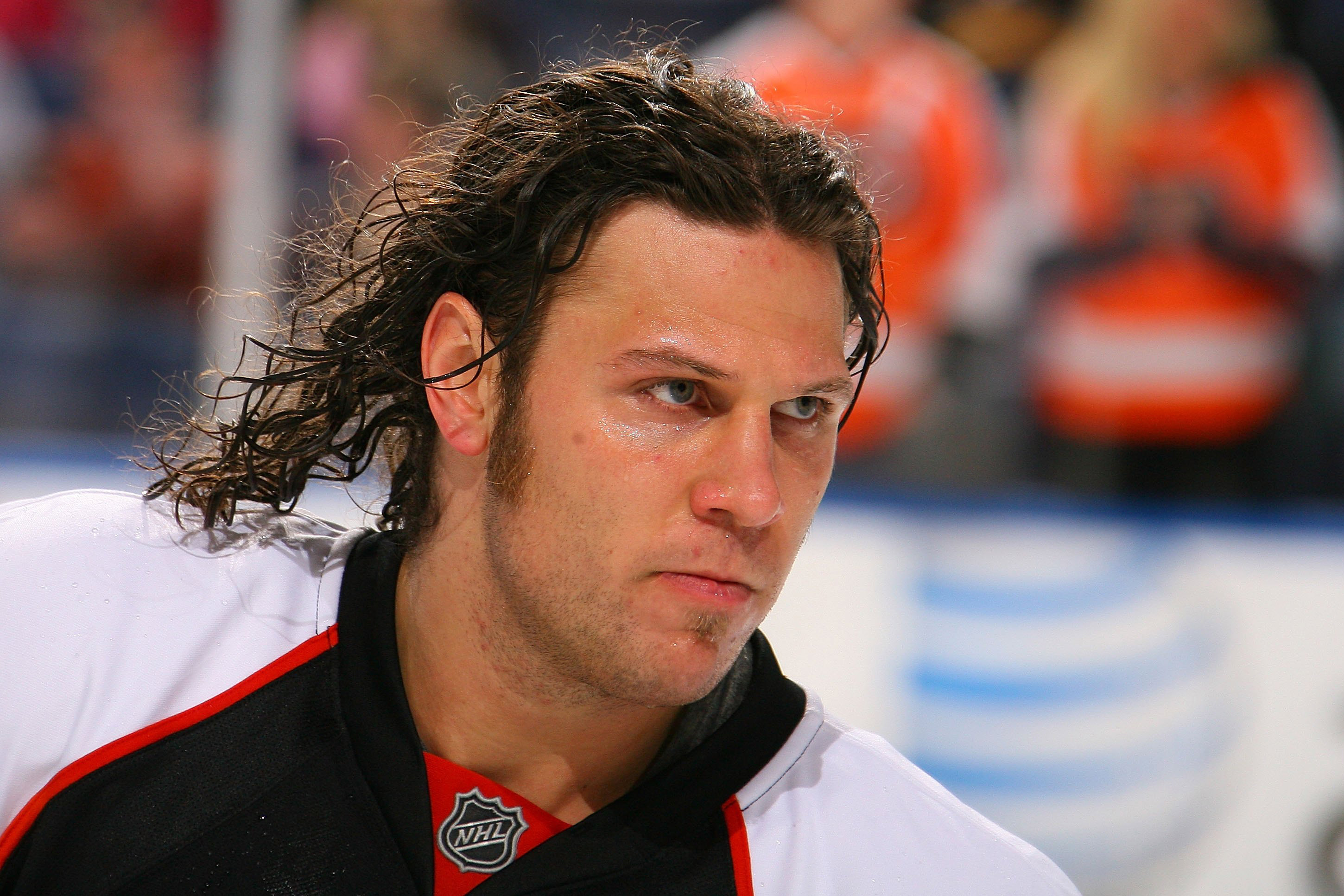
He fought his way through the NHL for portions of four seasons, accumulating more than 400 career penalty minutes while scoring just one goal. Most of his fights were brutal, barbaric affairs. His highlight reel shows a hulking giant, his eyes filled with violence, the kind of goon who could break your jaw and laugh maniacally in the aftermath, blood dripping from his face down onto the ice.
“It was something I enjoyed doing, and I think it was just an element of competition for me,” Cote said. “And it was also probably something I was doing out of fear — fear of not living my childhood dream or letting my parents down or people down.”
He said he medicated his pain nearly every day with booze. Beers were an appetizer on the way to doing shots at the bar. Shots often led to harder drugs. He and his teammates would stay out until 3 a.m., sometimes later, then try to sweat out the poison the next day during practice.
After a few years, his brain started to fog. He got bigger and stronger through weightlifting, and he looked like a monster on the ice, but every hockey skill except his fighting deteriorated. As his career wound down, he said, it felt as if darkness was creeping in. He grew depressed. He was afraid of what he’d become.
Today, Cote bears little resemblance to that enforcer in the videos. Thinner and calmer, he teaches yoga classes in a Delaware studio three times a week. With shoulder-length hair, tattoos on his arms and chest, he speaks with a soft baritone voice. He seems more monk than monster.
“I look back and it just shows maybe how confused I was and what reality I was seeking, which was supposedly happiness and fulfillment within chasing my childhood dream,” Cote said. “But it’s hard for me to wrap my head around me doing that now, just knowing who I am now, and realizing it takes a lot of darkness to do what I did.”

Cote said he took mushrooms recreationally throughout his 20s, but never in a therapeutic setting or with the understanding they might help him process both his physical and emotional trauma. “It was just part of the scene or part of the party,” he said.
But when he retired in 2010, he felt like he was facing an identity crisis. He had been a fighter for so long, he thought that’s all he was. How could a washed-up enforcer raise two daughters?
He started reading. What he learned shocked him.
Researchers had quietly revived the study of psychedelics as a medical treatment in 2000, and early findings suggested psilocybin often had noticeable benefits for people diagnosed with anxiety and depression. It helped some patients shed their addictions to drugs or alcohol. Other research suggested that psilocybin may actually be capable of reshaping the anatomy of the brain, restoring neuropathways, and helping heal traumatic brain injuries.
For Cote, who was diagnosed with at least three concussions in his hockey career and probably incurred many more, it was transformative.
Cote now recruits clients for Wake, which hosts immersive psilocybin retreats outside the U.S.
“Some people come to these events and they’re borderline suicidal,” said Tyler Macleod, a Wake co-founder and its chief experience officer. “They’re not fixed after one ceremony, but they’re not stuck in the dark anymore. They wake up and they’re like, ‘Oh, I can navigate a relationship with my kids again.’”
The ex-athletes who attend these retreats are all struggling with something, Cote said. They need help. In many cases, they feel as if they have tried everything else. He asks why they need to wait when so many studies and anecdotes indicate positive results?
“It’s like with cannabis: How many stories did we have to be told before we had a medical program?” Cote said. “It’s just been roadblocked for so long.”

***
In 1970, President Richard Nixon signed into law the Controlled Substances Act, legislation that divided drugs into five levels, ranking them based largely on their potential for abuse. Magic mushrooms were categorized as Schedule 1 substances, alongside heroin and marijuana, meaning the government believed they had no medical benefit as well as high potential for abuse. (Cocaine, oxycodone, and methamphetamine were all classified as Schedule 2 drugs.)
Those decisions — which Nixon adviser John Ehrlichman later said were politically motivated — continue to have a ripple effect today. Research into psychedelic treatments was put on hold for 30 years.
While the recent studies have been small in scope, they have shown remarkable effects. Prescription drugs approved for conditions such as anxiety or depression help at best 40% to 60% of patients. In early trials, psychedelics have reached efficacy rates of more than 70%.
And unlike most prescribed medications, which stop working soon after patients quit taking them, one or two treatments of psilocybin can have lasting effects of six months, a year, or even longer, according to one Johns Hopkins study. With minimal risk of addiction or overdose and centuries of use by Indigenous cultures, psilocybin is seen by many researchers as a potential breakthrough treatment with great benefits and few risks.
Scott Aaronson, director of clinical research programs at Sheppard Pratt, a nonprofit psychiatric hospital outside Baltimore, has been studying difficult-to-treat mood disorders for 40 years, starting with some of the early studies on Prozac.
“I’m a cynical, skeptical, sarcastic human being,” Aaronson said. “And I will tell you, I have never seen anything like it in all my years.”
But psilocybin is not without risks. It can exacerbate heart problems and trigger schizophrenia in those with a genetic predisposition, and the combination of psilocybin and lithium may cause seizures. Clinical trials have generally screened out patients at risk for such complications. Still, a significant portion of those who consume psilocybin, even without any of those concerns, have a negative experience.
“At a high dose, about a third of people in our studies, even under these ideal conditions, can have what would be called a bad trip, some degree of substantial anxiety or fear,” said Johnson, the Johns Hopkins researcher. “A person can be very psychologically vulnerable. It can feel like they’re dying.”
Sometimes, though, even those “bad trips” can lead to help with depression or other issues, researchers have found, especially with follow-up help from a therapist to process the experience.
The psychedelic effects of psilocybin can also disconnect a person from reality, which can lead people to do dangerous things, like running out into traffic or jumping out a window.
“The very conception of reality and themselves in reality, like who they are — these things can be profoundly changed and it’s not a good recipe for interacting in public,” Johnson said.
Researchers also describe cases where psilocybin puts people with unresolved psychological issues into long-term distress.
That’s why researchers are adamant that psilocybin should be administered in a clinical setting with trained therapists who can guide people through the experience, deal with negative outcomes when they emerge, and help people process and integrate their experiences.
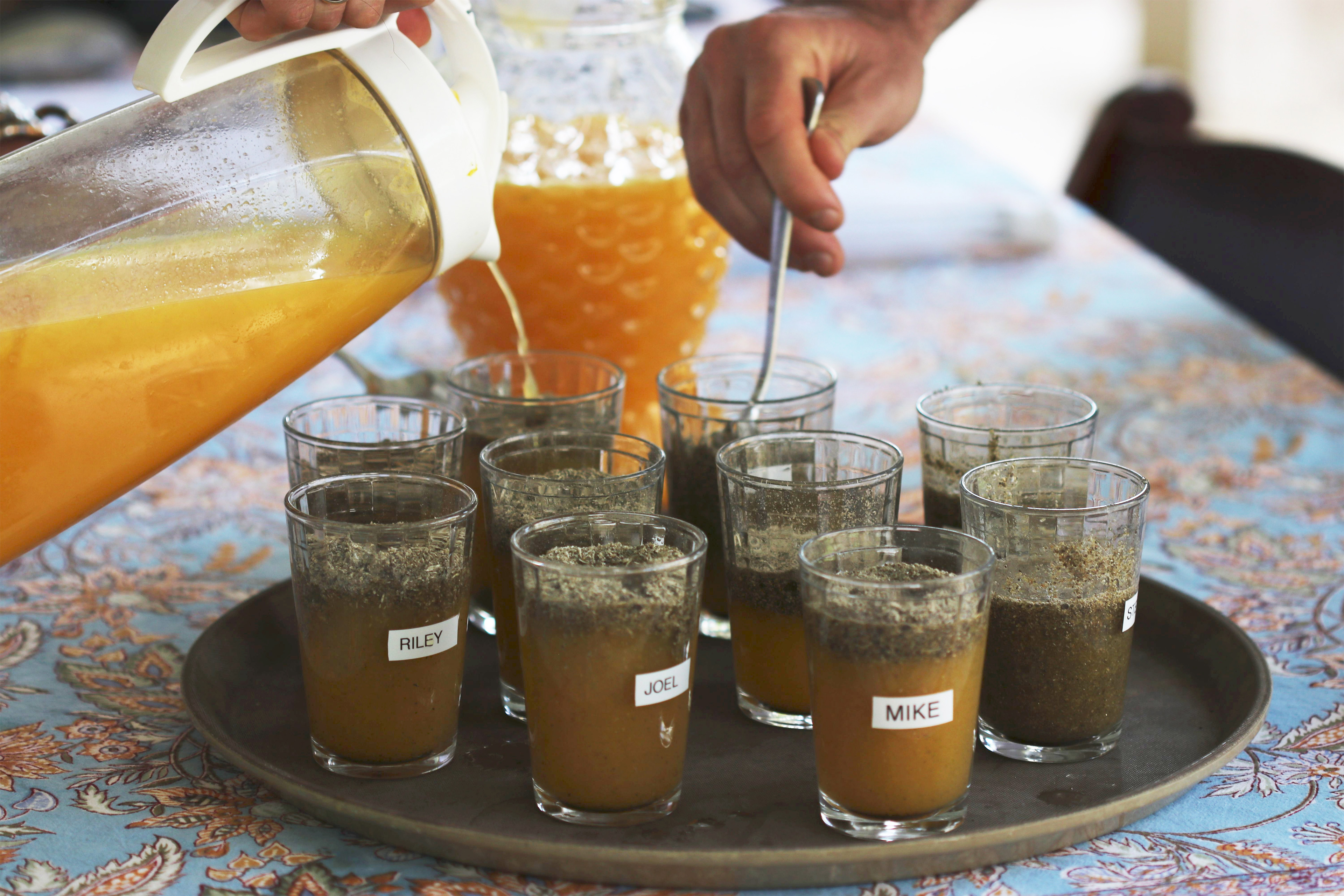
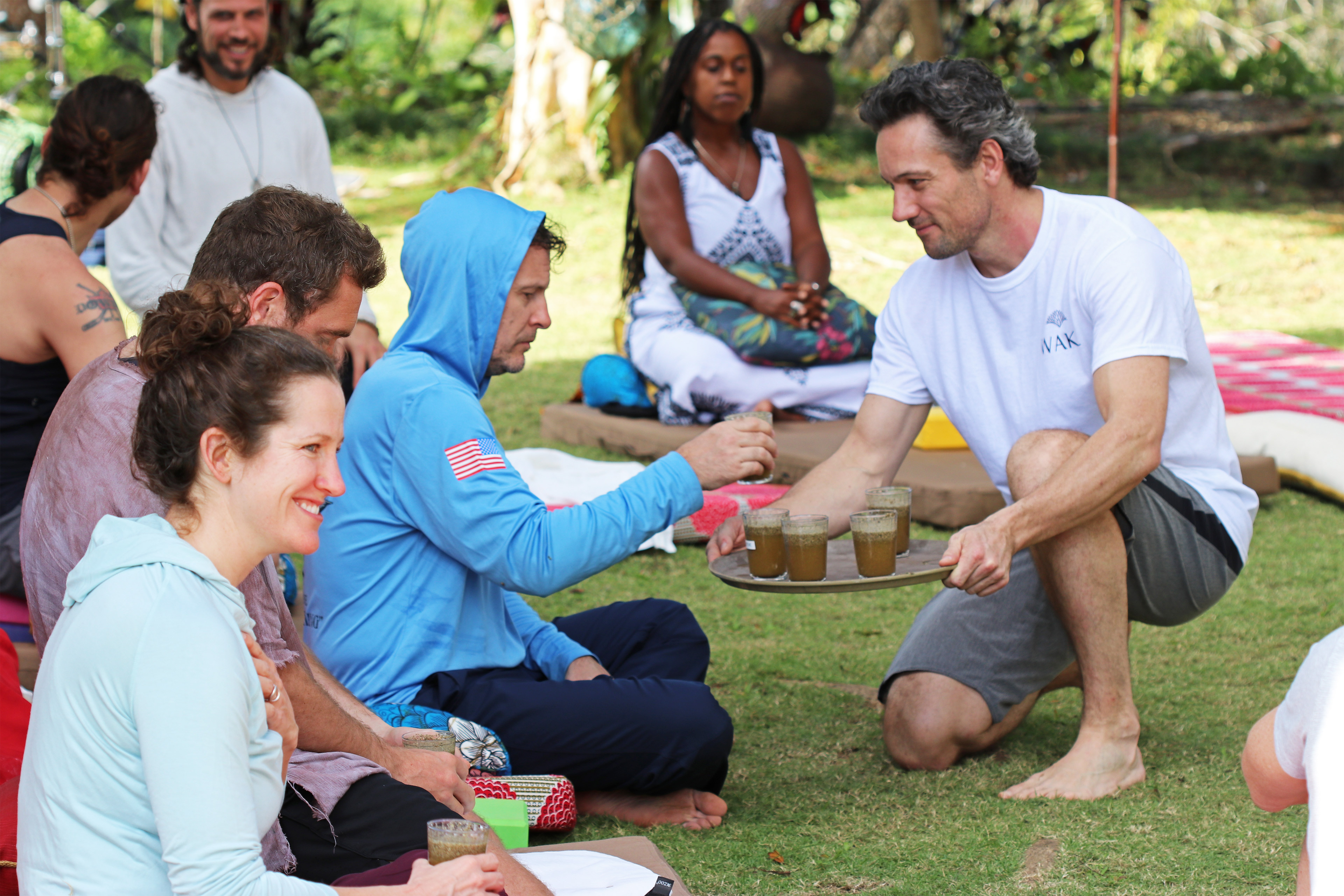
Clinical trials of psilocybin have relied on strict protocols, involving one or more sessions before the treatment to help the test subjects understand what to expect. The ingestion of the mushrooms is often done in a single day, with one or two therapists on hand. In the following days, the person returns for what’s known as integration, typically a one-on-one therapy session to help process the experience and to begin the journey toward healing. Some trials add an extra day of therapy in between two treatments.
Unlike with a typical medication, patients aren’t sent home with a bottle of pills.The entire protocol is more like a medical procedure.
But it’s a misconception that it’s the psychedelic medicine doing all the work, not the therapy that comes afterward, said Jeffrey LaPratt, a psychologist and psilocybin researcher with Sheppard Pratt. “It’s really hard work and it takes vulnerability. It takes courage. It can be really painful.”
***
Former NHL player Steve Downie felt as if something in him was broken when he was invited to the Wake retreat in Jamaica. His days were filled with fog. He was living with depression, often unable to leave his home.
“I got tired of going to those doctors and tired of talking to them,” Downie said. “Don’t get me wrong — I’m not saying doctors are bad. I’m just saying, in my personal experience, what I went through, it wasn’t positive. And it just comes to a point where you got to try something new, and that’s why I’m here.”
He also had trauma in his life he’d never truly confronted. When Downie was 8 years old, his father died in a car crash driving him to hockey practice. Throwing himself deep into the sport was his only way of coping with his father’s death. Like Cote, his teammate on the Flyers for two years, he played the game with reckless abandon, launching himself into violent collisions that left both him and his opponents bloodied.
After a junior career marred by a hazing controversy, Downie started his first NHL season, in 2007, with a 20-game suspension for a brutal check into the boards in a preseason contest that sent his opponent off the ice on a stretcher. It remains one of the longest suspensions ever issued by the league. In the hockey press, he was labeled a villain, a thug, a goon, and borderline psychotic. The words stung a little, even when he tried to laugh them off.
“I got no teeth, and I am small, so they can’t be all that wrong,” Downie said. “Right? End of the day, it was a job. I did what I was asked.”
Over his nine seasons playing for five NHL teams, he endured more concussions than he could remember. Deaf in one ear, on the verge of tears every day, and fairly certain he was drinking too much, Downie, now 36, would look in the mirror some days and wonder if he would be dead in six months. He didn’t know anything about psychedelics, just that Cote had told him he would help when Downie was ready.
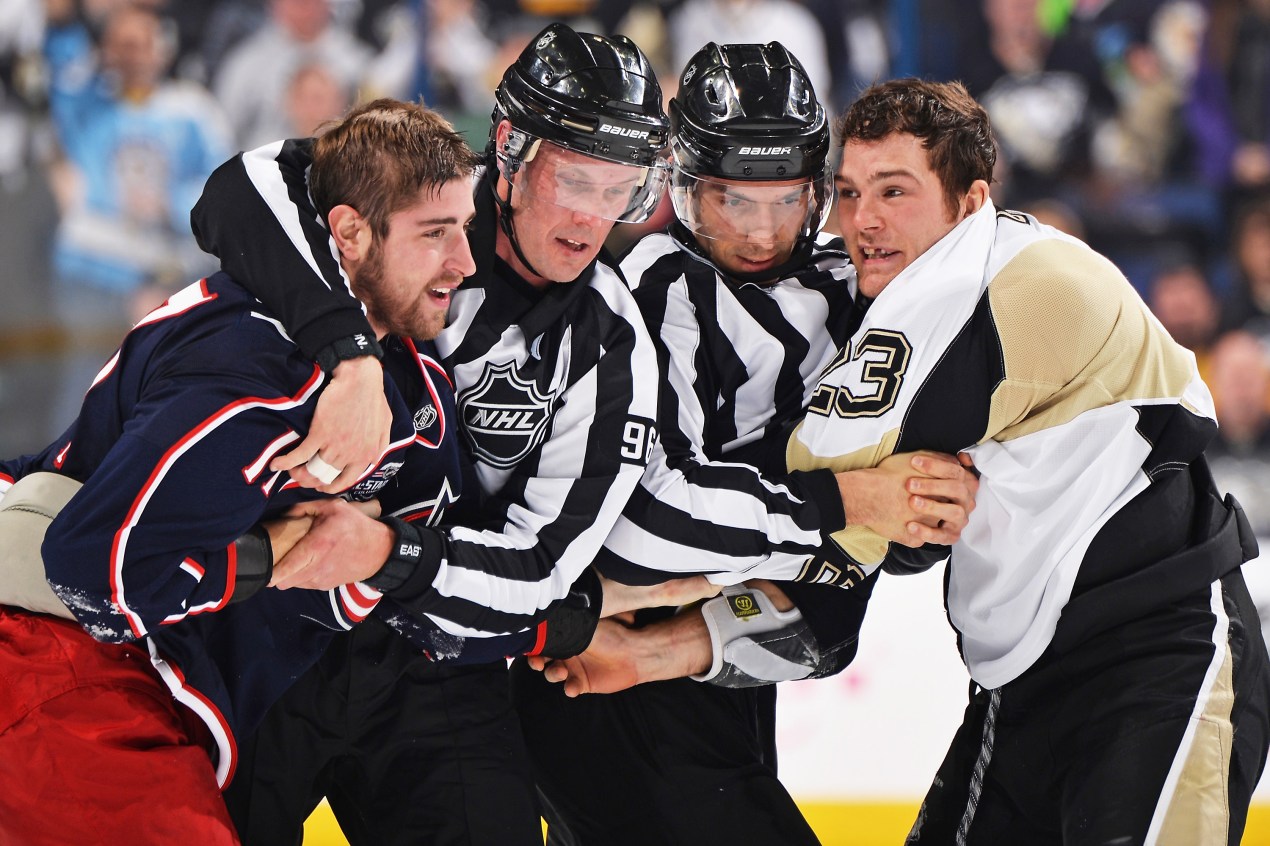
“I called Riley and I said, ‘I need something, man.’ I got tired of going to doctors and talking to them,” Downie said. “A lot of the pills they give you, they eat at your brain. They don’t really help you.”
Justin Renfrow, a 33-year-old lineman who played in the NFL and in Canada, came seeking clarity. He was considering retiring from professional football, something that both scared and excited him. He’d been playing for half his life, and the game was a huge part of his identity. It was the last connection he had to his grandmother, one of the most important people in his life. She was the one who went on recruiting trips with him. After she died in 2021, Renfrow felt that a part of her was still with him as long as he played the game.
But after a decade of playing professionally, Renfrow’s body was battered. One of his knees was aching. He had come to loathe pharmaceutical drugs. He said he’d been prescribed so many different drugs by team doctors — including stomach coaters and nerve blockers so he could take more painkillers — that his body started to experience terrible side effects. Once, he said, he had such a bad reaction to a combination of painkillers he’d been given, he needed medical attention after he sweated through his clothes and began to have trouble breathing.
“It’s just, ‘We need to make the playoffs, so take this,’” Renfrow said. “It threw my body into a tailspin.”
He’d used psychedelic mushrooms numerous times, mainly as a way to cope with the pain brought on by football, but he’d never used them as part of a ceremony or to be meditative. On this trip, he sought clarity. Was it time to walk away from football? He was passionate about cooking and thinking of starting his own show on YouTube. Maybe it was time to shift his focus and let football fade away.
“I’ve got a lot of people who depend on me every day,” Renfrow said.
The ceremony, the athletes hoped, would guide them toward some answers.
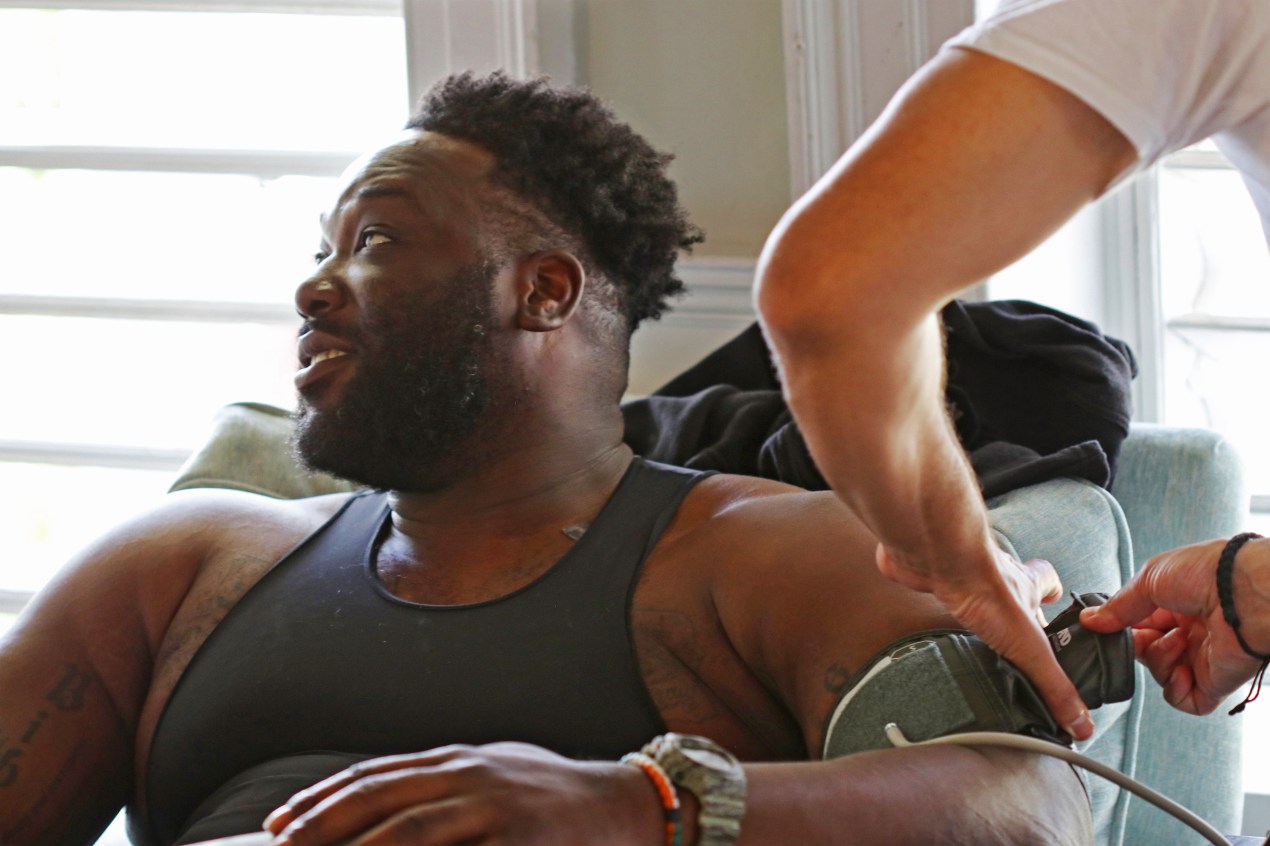
***
The research into psychedelics is promising and exciting, but the effectiveness of mushrooms as a treatment isn’t fully settled. But even if psilocybin and other psychedelics prove to be nothing more than a placebo — which some researchers say is possible — many athletes swear they are finding real relief from the anxiety, depression, and other traumas lingering from their playing days.
With a potential multibillion-dollar global market, there’s also a huge financial incentive. Wake is just one of a growing number of for-profit startups backed by private investment money staking a claim in the psychedelic treatment space. They and others hope to open treatment centers or sell the drugs in the U.S. and Canada eventually. Magic mushrooms are illegal to produce, sell, or possess in Canada.
During the Jamaica retreat, Wake leaders gave a presentation to participants on how they could invest in the company.
Macleod said he grew interested in psychedelic therapy not as a business opportunity but after he lost his sister, Heather, six years ago to suicide. Losing her drove him to search for answers. His sister had been a competitive skier in Canada, but a series of falls led to multiple concussions, and throughout her adult life she had anxiety and depression. Traditional medicine repeatedly failed her, Macleod said. Every week, he finds himself wishing he’d known then what he knows now and used it to try to save her.
“I can’t tell you how many people come to me who are struggling like my sister was,” he said. “God, I wish she could be here. I know that she’d be cheering us on. I see her sometimes looking down on us and saying, ‘Help other people who were stuck where I was.’”
Eager to bring psychedelic treatments to consumers, corporate firms often extrapolate research findings from tightly controlled clinical trials with carefully selected patients to promote broader use by the general population in almost any setting.
“The push for psychedelics generally is being driven by people that want to make money, much more than it is about scientists,” said Kevin Sabet, a former White House Office of National Drug Control Policy senior adviser who’s now president and CEO of Smart Approaches to Marijuana, a political group opposed to marijuana legalization. “Why would we let the Wall Street investors, who are really the ones here trying to make money, be driving the conversation?”
Commercialization could be both good and bad for psychedelics. On the one hand, it could provide funding for research; on the other, the desire for a return on that investment could improperly influence the results and put patients at risk.
“Your business model isn’t going to work well when someone’s jumped out of a window and it’s on the front page of The New York Times,” said Johnson, the Johns Hopkins researcher.
Clinical research must also overcome the mushroom’s image as a party drug, something hippies share out of plastic baggies in the back rows of concerts. To change that narrative, Wake and other companies say, they are leaning hard into the science. This isn’t thrill-seeking, they say, but legitimate medicine treating real psychiatric conditions. It’s the same argument proponents of marijuana legalization made, whether they believed it or were using it as a means to an end — pushing to legalize cannabis as medicine before opening the floodgates to unfettered recreational use.
Wake leaders, like most executives in the psychedelic space, have said they are committed to assisting research to prove to federal regulators that psilocybin is safe and effective. Blood and saliva samples a doctor collected at the Wake retreat, they said, would be used to identify genetic markers that could predict who will respond to psilocybin treatment.
Wake’s team had participants use a helmet containing experimental imaging technology that had been used in clinical trials to track brain activity before, during, and after psychedelic experiences. As part of the research, participants wore the helmet while playing games of Wordle.

Many academic researchers wonder whether some companies are simply applying a veneer of science to a moneymaking endeavor, what many skeptics refer to as “placebo theater.”
Indeed, Aaronson fears the field could soon be “full of hucksters.”
“The problem you’ve got is that, not surprisingly, social media and communications works much faster than science does,” he said. “So everybody’s trying to get their hands on this stuff because they think it’s going to be incredible.”
Aaronson has designed clinical trial protocols for Compass Pathways, a competing for-profit company seeking to market psilocybin treatments, and has turned down other firms looking to create a footprint in the psychedelic space. (Aaronson receives funding from Compass to support his research but said he has no direct financial interest in the company.)
“I worry about who’s backing the play from some of these companies and try to figure out what somebody is really after,” he said. “You talk to people and you see whether there’s a real plan to do research or there’s a real plan to sell something.”
***
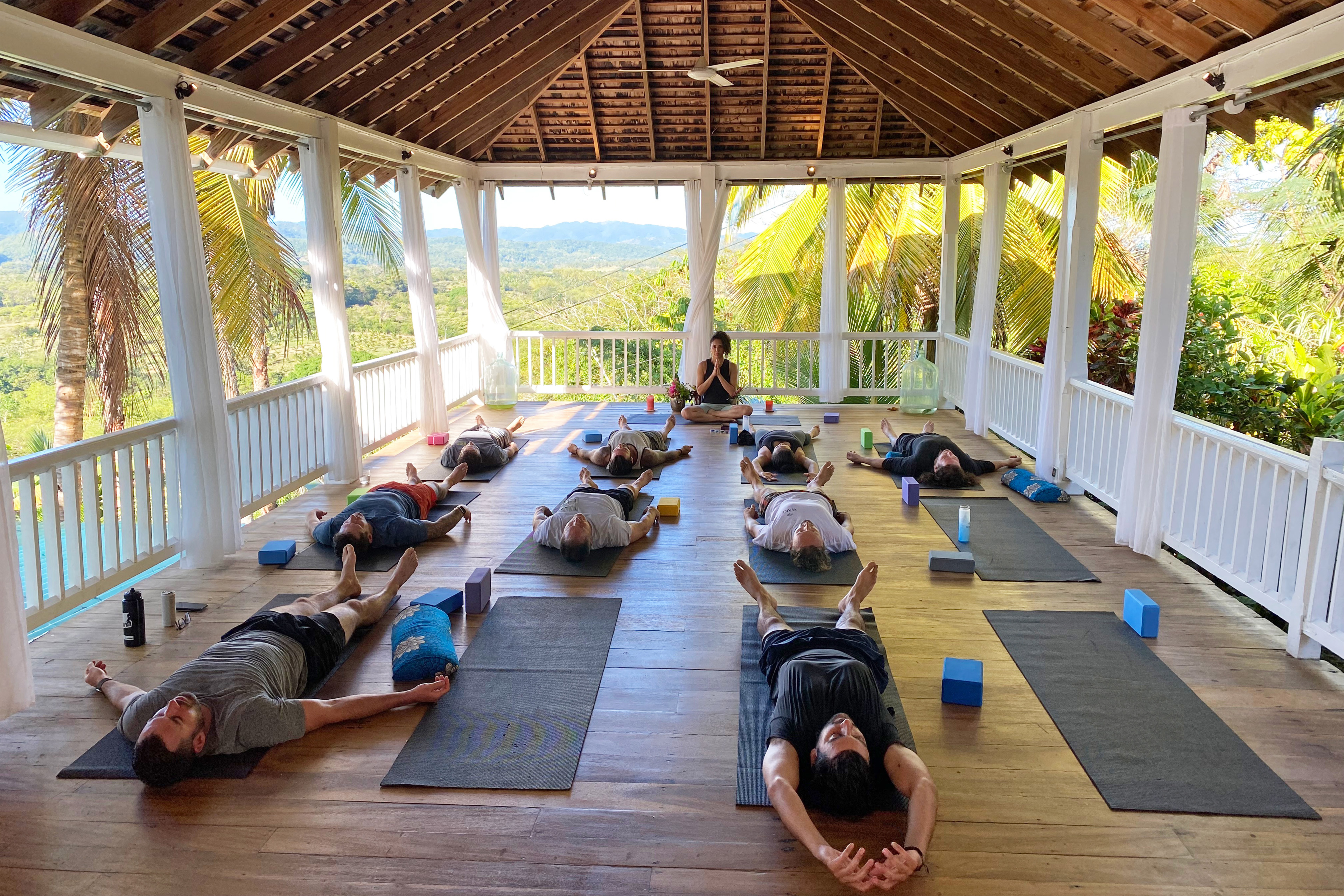
A hum of nervous tension lingered in the air as the athletes prepared for the ceremony. At breakfast, there wasn’t a lot of small talk. The attendees milled about, checking in with Wake’s medical personnel to offer up their blood and saliva samples. Some participated in a yoga class in an outdoor studio that overlooked the jungle.
Wake had hired a Jamaican shaman — a woman named Sherece Cowan, a vegan food entrepreneur who was a 2012 Miss Universe Jamaica runner-up — to lead the athletes in the ceremony. She asked to be called Sita and referred to herself as a plant medicine facilitator.
She spoke slowly and deliberately, waving smoke from an urn as she urged participants to gather in a circle on the lawn of the estate. After drinking a 3- to 5-gram dose of psilocybin, which had been ground into a powder and mixed with orange juice, the athletes would slip into a dream state for the next four to six hours.
“I hope that you get all that you need. It may not be all that you’re asking for, but I hope you receive all that you need,” Cowan said. “Blessings on your journey.”
A local musician began to play, his drums and chimes intended to enhance the journey. Most of the athletes lay on mats, as if sleeping. Cote sat in a yoga pose. Nick Murray, Wake’s CEO, had asked Cote to wear special headgear — an electroencephalography device smaller than the other helmet — to measure his brain activity. Except for the musician’s drums and chimes, it was quiet. The wind occasionally rustled the leaves on the trees at the edge of the property, but for the next six hours, inside the circle, time mostly stood still.
Two hours into the ceremony, after the psychedelic had kicked in, whatever was taking place was occurring inside the athletes’ heads. Cote, remarkably, was still holding his yoga pose.
The stillness was broken when Renfrow stood up from his mat after three hours. He’d worn a sweatshirt to the ceremony with his initials, JR, emblazoned across the chest. He peeled the shirt off his body in frustration and tossed it aside.
Tears spilled down his face.
As the ceremony wound down, the athletes began sitting up, and a few chatted quietly.
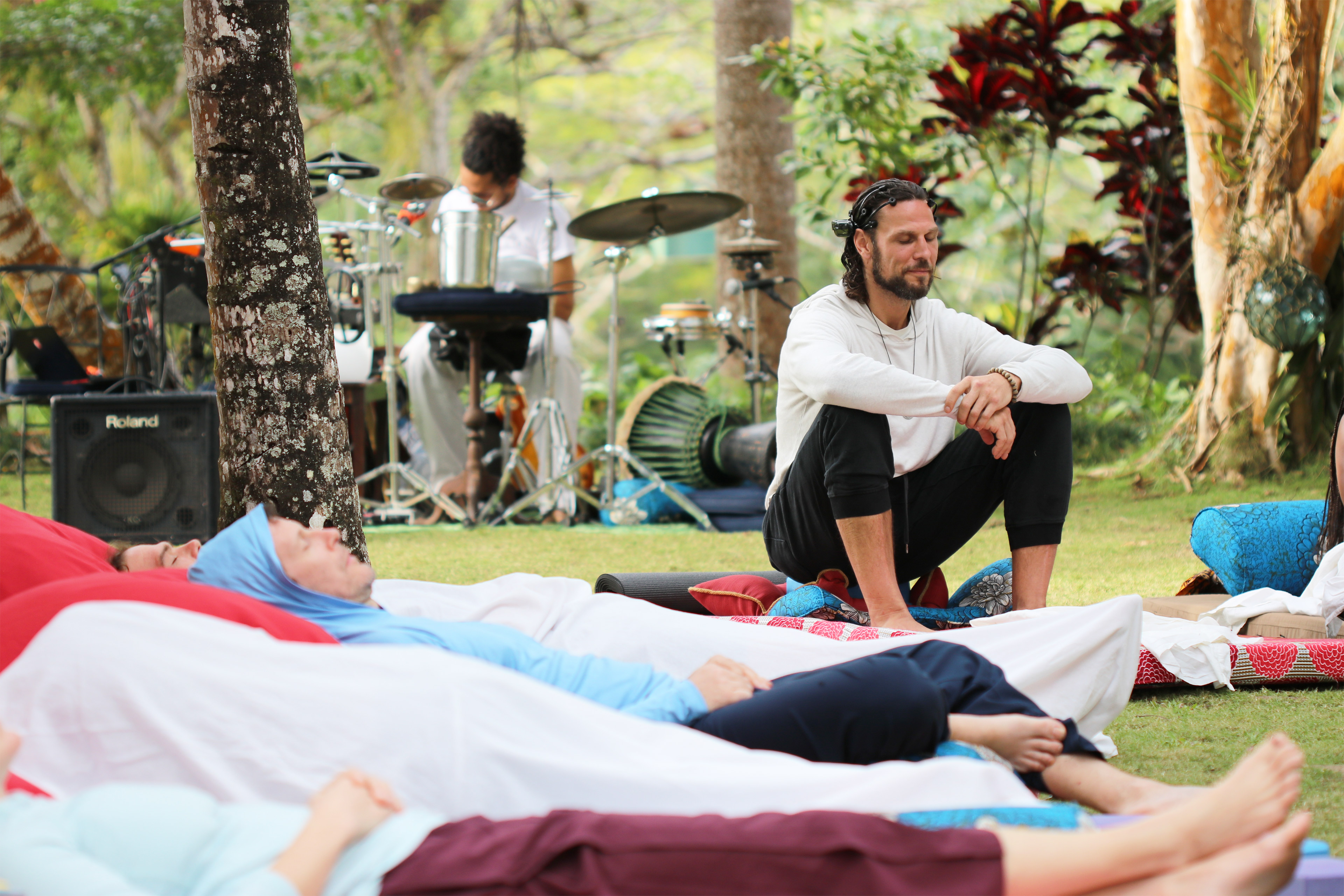
Most weren’t sure how to describe the experience. For some, it felt like a descent into the recesses of the mind, with colors and emotions swirling together. Others said they confronted traumas they thought they’d buried, or emotions they wanted to suppress. They expressed feeling a connection to the other people in the circle.
“It’s the ultimate ego killer because, for me at least, it gives you incredible empathy that you’ve never felt before,” Lee said. “When you’re doing a journey with other people, you see yourself in them. It’s almost like you’re walking past a mirror, different mirrors. You see parts of yourself in everybody and you realize that we’re all connected and we’re all going through something, we’re all in some sort of pain, and it humbles you.”
Most of the athletes drifted off to be alone so they could scribble down their thoughts in a journal, per instructions from Wake staffers. There would be a communal therapy session the next morning.
Each would be asked to share something from their journey.
***
In the end, most of those curious about psilocybin simply want to know: Does it work? And how does it work? Scientists say those are difficult questions to answer right now.
Researchers have discovered that classic psychedelics, like psilocybin and LSD, act on the serotonin 2A receptor, the same receptor targeted by the most common antidepressants on the market. But beyond that, the understanding of how they work to help people is, at this point, more theory or conjecture than scientific fact.
Johnson, the Johns Hopkins researcher, said psilocybin helps increase openness in people, allowing them to step outside of their vision of who they are. Someone who is resigned to being a smoker who can’t quit or a person with depression who can’t find happiness can, under the influence of psychedelics, view themselves in a different way, he said.
“Once they’re outside of the mental trap, it just becomes so obvious to people with these different disorders that, ‘You know what? I can just decide to quit smoking. I can cast aside my sadness,’” Johnson said.
Studies with rats show that psychedelics also appear to increase neuronal connectivity in the brain, even after a single dose. That could help the brain recover from traumatic injuries or concussions, finding new pathways around damaged areas.
The prevailing theory of how psilocybin and other psychedelics might help treat mental health is that they tamp down activity in the brain’s default mode network. It’s a set of regions in the brain that are engaged when people are ruminating about something and one of the few parts that is overactive in people with depression.
They often revisit mistakes they’ve made over and over again or continually beat themselves up about them, said LaPratt, the Sheppard Pratt researcher. That overactivity in the default mode network leads to repetitive patterns of negative thoughts — What’s wrong with me? Why am I so unhappy? — from which the person cannot escape.
People with depression often ruminate about the past; people with anxiety, about the future.
“You may have something coming up and then the brain starts thinking, and again, like that broken record,” LaPratt said. “It can be very easy to start thinking about how everything might go wrong and start catastrophizing.”
That repetitive thinking prevails in people with other conditions, too, including obsessive compulsive disorder and post-traumatic stress disorder. It begins to affect their sense of who they are; they define themselves as their condition.
But psychedelics seem to help people examine old traumas without falling back into the same kind of destructive loop. They can help people feel more connected to others. Depression and anxiety aren’t simply erased, LaPratt said, but people can gain a new perspective on their problems and start to feel, maybe for the first time, that they can shake them off.
“We see increased openness and some motivation for changing behaviors,” he said.
Psychedelics are mostly out of a person’s system by the next morning, but, according to researchers, that increased openness can last for weeks or months without additional doses, providing a window during which they can begin to address their problems.
“It is maybe that we’re helping people get to the point of being able to accept the things they can’t change and to change the things that they can,” Aaronson said, echoing the Serenity Prayer, often used in 12-step recovery programs. “Personal autonomy is taken away from people with depression. They don’t feel like they can operate in their own best interest. They get caught in internal conflict. And I think this helps them get beyond that.”
***
In the morning, the athletes gathered on a patio for a form of group therapy called integration. It was scheduled to last at least two hours. Macleod explained it was an essential part of understanding a psilocybin journey. Every attendee had an opportunity to share something from their experience, whether it was enlightening, confusing, uplifting, or a mixture of many emotions.
Lee spoke about his anxiety, about trying to understand what his identity would be now that he wasn’t a boxer. By walking away from the ring, he feared he was letting down all the people who supported him when he chose a boxing career instead of a job in finance after he graduated from Notre Dame. But now he’d come to understand those were his own insecurities. He could walk his own path. He could help people experiencing similar physical and emotional pain.
Renfrow took several deep breaths as he searched for words. For most of his life, he’d viewed himself as a football player. But on his psilocybin journey, he felt as if members of his family told him it was OK to let go. When he stood up during the ceremony and peeled off his shirt with his initials, he said, he was symbolically letting go of something.
“It’s OK to stop chasing the football journey,” Renfrow said. “I’m not going to suit up this year and that’s cool with me. I’ll be able to figure it out.”
In saying goodbye to football, he said, he was saying goodbye to his grandmother.
“Football was her,” Renfrow said, and he began crying. “We went on all my recruiting trips. So I had to let her go with letting football go. And that was a big moment when I stood up. I had to let her go. So it was tough, but I had to do it.”
When it was Downie’s turn, he tried to defuse the tension by joking that it was time to go eat. He didn’t want to open up to the group, he said. He’d written some notes on a sheet of paper. His hands shook as he tried to read them.
“I wasn’t drinking and I wasn’t doing drugs for fun,” Downie said, his voice trembling. “I was numbing my brain because it was f—ed. I couldn’t turn out of my driveway for a year. I sat in dark rooms and I turned to drugs and alcohol.”
But on the psychedelic trip, he said, he was able to connect with his past. “I’m sitting there and I’m going through my brain, I’m talking to my dad, I’m talking to my family members. I’ve said sorry to everyone I could possibly say sorry to,” he said. “It made me cry. It made me feel good.”
He realized, through the journey, he wanted to be a better man. His voice was shaking as he tried to get the words out.
“At the end of all this, I think what I’ve learned is how to control what goes on. I do have control. I can control this,” he said. “I’m going to go home and I’m going to identify and execute and be a better father and stay around for my kids, deal with my concussion problems as best I can.”
He turned to look directly at Cote, tears streaming down his cheeks from behind his sunglasses.
“I mean this, bro, when I say you saved my life.”
As Downie’s words gave way to silence, Lee stood up from his chair. He crossed the circle, walked over to Downie, and opened his arms wide. The two fighters, who came to Jamaica sad and broken, embraced.
***
While studies have found that psilocybin plus therapy is more effective than therapy alone, it’s unclear whether psilocybin alone, without the preparatory work or the integration afterward, has any effect.
“There’s a reason why people who go to raves and take psilocybin don’t get cured,” Aaronson said. “Psilocybin is not an antidepressant.”
Even within strict clinical trial protocols, the question remains whether psilocybin-assisted therapy works. Preliminary studies have been promising, but the numbers of test subjects have been small. Much larger studies are needed to determine both safety and efficacy.
Still, that hasn’t stopped psilocybin advocates from touting the research to date, implying it is more definitive than it is. Moreover, many mushroom evangelists attribute the positive effects from clinical trials to taking psilocybin in general, discounting the protocols used in the studies.
The Wake retreat in Jamaica, for example, had the athletes take psilocybin in group ceremonies guided by Cowan, the local shaman, while the group integration sessions were led by an osteopathic physician. Neither was a licensed psychotherapist, Murray said. It’s unclear whether the benefits of psilocybin therapy suggested by clinical research would apply to a group setting — for the dosing or the integration.

Murray, Wake’s CEO, said that while clinical research strives to remove any variables, such as interactions between test subjects, Wake leaders feel the group setting offers benefits to its clients.
“It’s that group feeling that, ‘We’re in this together. My divorce is like your divorce. I lost a brother,’” he said. “That’s tough to put into a clinical trial.”
Wake had registered to hold a clinical trial in Jamaica, but Murray said the company ultimately decided not to pursue it, focusing on offering treatment instead.
Still, Murray said Wake is contributing to scientific research: They collected the blood and saliva samples, and participants were asked to fill out questionnaires before and after the retreat to help assess whether the treatment worked.
Murray said Wake uses the same clinically validated questionnaires used in a psychiatrist’s office. “So, it’s not theater. These are the actual tools that are used,” he said. It would be hard with Wake’s approach, however, to parse whether participants were helped by the mushrooms and integration or by other influences, such as being on vacation in Jamaica, being among a supportive peer group, or the marijuana many of them smoked regularly during the retreat.
“You’ve got to at least listen and take it seriously. There’s anecdotes of people saying they would have killed themselves,” Johnson said. “Sometimes you do see just the ‘full monty’ experience, where this person is just there on a dark, dark trajectory and their whole life changes. I suspect this is real. Something’s happening with these athletes making these reports.”
Glowing anecdotes, particularly when they come from high-profile athletes or celebrities, carry weight with the public and help spur measures like those in Oregon and Colorado that are establishing pathways to psilocybin treatment regardless of what researchers or regulators think.
“When people are upset and we’re not meeting their needs, they’re going to try things out,” said Atheir Abbas, an assistant professor of behavioral neuroscience at Oregon Health & Science University. “Hopefully, scientists can catch up to understanding why people think this is really helpful. And maybe it is helpful, but let’s try to figure out if it is and how.”
But there’s a danger in taking these stories, no matter how compelling, and extrapolating safety or efficacy from them.
“The hard part is the plural of anecdote is not data,” said Sabet, the Smart Approaches to Marijuana CEO. “And the data isn’t there yet.”
***
A year after the retreat, Downie, Renfrow, and Lee said they believed their psilocybin journey had helped them. It did not magically fix all their issues, but each considered it a positive experience.
Downie no longer feels that he is stuck in a dark place. When he returned to Ontario, he said, his family noticed a difference right away.
“That trip gave me a lot of clarity,” Downie said. “It gives you directions. It kind of gives you answers internally. It’s a unique thing I experienced. My year was definitely better than the previous year, that’s for sure. … Do I think it could help other people? I would say yes. Did it help me? Absolutely.”
No longer feeling like a prisoner in his house, Downie started a snowmobile camp that takes adults on guided adventures around Moosonee, near James Bay. It’s something he used to do with his family before his hockey career took off.
“It’s not much to brag about, but it’s the most northern you can go in Ontario in a snowmobile,” Downie said. “A lot of adults come from all over. It’s a pretty cool experience. It’s always been a passion of mine.”
He still has lingering issues from his concussions and suspects he always will.
“It is what it is,” he said. “Would I say it’s getting better? It’s a process.”
The most positive outcome has been the joy he’s found in being a father.
“My little guy is starting to fall in love with hockey, which is something I’ve been waiting for,” Downie said.
Although Downie hasn’t taken another psilocybin journey, he said he would be open to it.
Renfrow emerged from the ceremony intent on retiring from professional football but three months later re-signed with the Canadian Football League’s Edmonton Elks. This year, he joined the National Arena League’s Jacksonville Sharks, in part to be closer to his son.
“At that time, I thought I was going to quit football,” he said.
But he feels comfortable where he is and says he’s fulfilling his goals, including hosting that cooking show on YouTube he’d hoped to do. And he said he’s having fun again. He now turns to mushrooms whenever he has a big decision to make.
“I wholehearted believe in that and all the kind of guidance it’s given me,” he said. “You couldn’t ask for a better thing, to have followed guidance from a mushroom journey.”
Lee moved from California to Austin, Texas, and now runs a CBD business with his sister. Finding his post-boxing identity has remained a process. In his psychedelic journeys at the Wake retreat, Lee said, he was never thinking about sports or boxing. His visions were all about family, God, the universe.
“It kind of just makes me realize how much importance I’m putting on something that my subconscious doesn’t even care about,” he said. “My subconscious doesn’t care that I’m a boxer, that I was a fighter and did this and did that. It’s all kind of ego.”
The experience, he said, helped him understand how powerful the mind can be — that it can be a friend or a foe.
“I came away from it kind of realizing that I have all the tools to heal myself,” he said. “That’s huge. Because, especially for guys who have had concussions or athletes or what have you, you feel kind of isolated, you feel alone, you feel hopeless. So it kind of gives you a sense of hope.”
It allowed him to move beyond the need to prove himself, in the ring or outside it, to stop measuring his worth by his accomplishments. He’s become obsessed with much calmer, nonviolent pursuits: surfing and pickleball.
“I can turn my brain off just like in boxing,” he said. “But at the same time, it’s easier on my body and just, I don’t know, more fulfilling. I don’t have to prove anything.”
The Jamaican trip is allowing him to move forward, to do the work necessary to heal.
“Part of me went into it hoping that all my problems would be solved, but putting those expectations on it can be difficult,” he said. “Am I cured? No. But did it really help? And was it, like, one of the most profound experiences of my life?
“I’d say yes.”
This article was reported and written by KFF Health News’ Markian Hawryluk and ESPN’s Kevin Van Valkenburg. Researcher John Mastroberardino contributed to this report.
[Editor’s note: As part of the reporting of this article, some members of ESPN’s reporting team, under the guidance of Wake Network staff, used psilocybin. Wake Network was compensated, but not by ESPN.]
